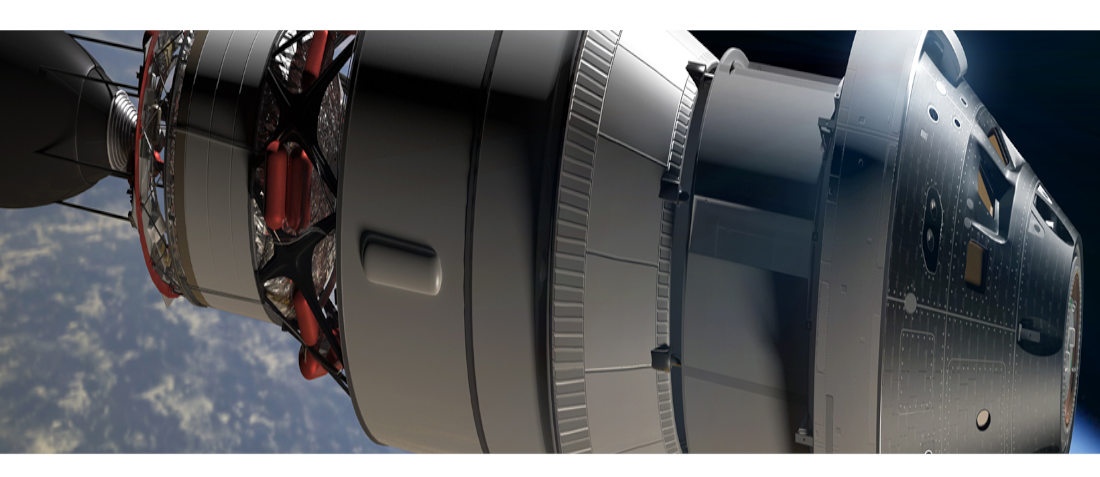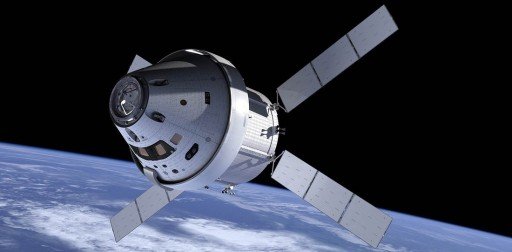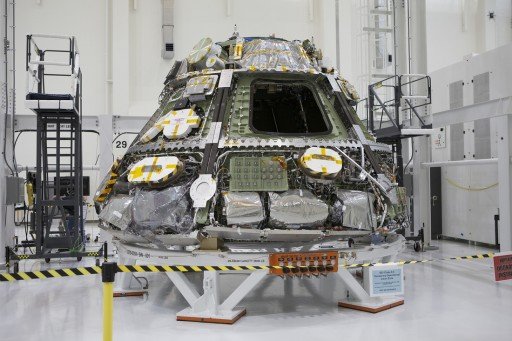
Multi-Purpose Crew Vehicle ( Orion MPCV )
- Posted by Israel Pedroche
- On January 13, 2020
- 0
EEE components for the European Service Module
The Orion mission, an ESA/NASA cooperative project, will be the next manned vehicle beyond Low Earth Orbit (LEO) and will enable manned missions to the Moon, Mars and asteroids. The new vehicle will be propelled by a service module based on the design and experience gained with the ATV, the ISS supply spacecraft with centralized procurement of the electronic components, in which Alter Technology participated for almost 10 years. The service module will provide propulsion, thermal control, water and gas to the inhabited module.
This module is based on the design and the experience gained from the Automated Transfer Vehicle (ATV) developed and constructed by Airbus Defence and Space on behalf of ESA and used to carry supplies to the International Space Station.
In its exterior design, the Orion Crew Module closely resembles the appearance of the Apollo Command Module, also using the 57.5-degree frustum shape.
Overall, the Crew Module (CM) will have a maximum diameter of 5.02 meters standing 3.3 meters tall with a launch mass around 8,900 Kilograms, offering an internal volume of 19.56 cubic meters , 8.95m³ of which will be habitable volume that can be accessed by the crew. Orion is designed to be able to support a crew for 21 days of active crew time plus 210 days in a quiescent mode which will require crews to be supported by space habitat modules for long-duration flights to distant targets.
European Service Module
The design of the European Service Module (ESM) is based on the Automated Transfer Vehicle (ATV), the European supply craft for the International Space Station. It is a major achievement, as this is the first European development of a human spacecraft operating beyond Earth orbit.
The ESM is a cylindrical module with a diameter of 4.5 metres and a total length – main engine excluded – of 2.7 metres. It is fitted with four solar array ‘wings’ with a span of 18.8 metres. Its dry mass is 3.5 metric tons and it can carry 8.6 tons of propellant. Besides propulsion and power, ESM will carry consumables.
The module sits directly below Orion’s crew capsule and provides propulsion, power, thermal control, and water and air for four astronauts. The solar array spans 19 m and provides enough to power two households.
More than 20 companies around Europe are working on the project, most building on their expertise earned from the five Automated Transfer Vehicles that delivered cargo to the Space Station and reboosted its orbit from 2009 to 2015.
Orion’s first test flight came in December 2014 on a Delta IV Heavy vehicle that put the capsule (without ESA’s module) into a highly elliptical orbit that soon brought it back for splashdown in the Pacific ocean.
Over 20 000 parts and components in the European Service Module need to be assembled – from electrical equipment to rocket engines, solar arrays, propellant tanks and life-support as well as hundreds of meters of cables.
The first service module to go into space as part of the Orion spacecraft, the Flight Model or FM-1, will fly more than 64 000 km beyond the Moon and back. Thales Alenia Space Italy delivered the structure and assembly is underway at the site of Airbus Defence and Space (Airbus DS) in Bremen, Germany.
GET IN TOUCH TODAY!
Have questions? Contact us
- JUICE Jupiter Icy Moons Explorer - October 4, 2020
- Euclid - January 14, 2020
- Multi-Purpose Crew Vehicle ( Orion MPCV ) - January 13, 2020




0 comments on Multi-Purpose Crew Vehicle ( Orion MPCV )